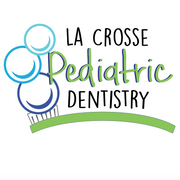A Parent’s Guide to Dental Fluorosis

If your child is at teeth-brushing age, their dental care may include fluoride toothpaste. Fluoride prevents tooth decay and protects the enamel, but if consumed in large quantities during early childhood, it could lead to dental discoloration. In this guide, find out more about this preventable problem and what you can do to avoid it.
What Is Dental Fluorosis?
This is a condition that affects any teeth exposed to too much fluoride. This is typically a concern until a child turns eight years old, when the teeth are still developing. An affected tooth is discolored, sometimes with darker spots, and can be entirely yellow or brown in more severe cases. The surface may also look noticeably irregular when the permanent teeth break out.
How Is It Treated?
 If the fluorosis is mild or affects the back teeth, no treatment is necessary.
If the fluorosis is mild or affects the back teeth, no treatment is necessary.
Cosmetic dentistry services, such as bonding, crowns, and veneers, are effective treatments for visible teeth. These options cover the discolored portion of the tooth to create a bright, natural appearance.
How Can You Prevent It?
Fluoride is safe and healthy, so it is present in most municipal water supplies and toothpastes. Many fruit juices and foods also contain this mineral.
If you’re concerned about this condition, you can wait until your child is older to give them any fluoride supplements or treatments. Tots shouldn’t start using fluoride toothpaste until they’re able to spit when brushing their teeth. You can help your little one prevent dental discoloration by ensuring they spit out the toothpaste after brushing.
La Crosse Pediatric Dentistry in La Crosse County, WI, specializes in developing smiles. The friendly team takes the utmost care to create a calm, welcoming environment to help patients feel at ease. They offer a full range of dental care services, including preventative, restorative, and cosmetic dentistry. Call (608) 782-4054 to schedule a dental care appointment or go online to learn more about what they do.
About the Business
Have a question? Ask the experts!
Send your question

